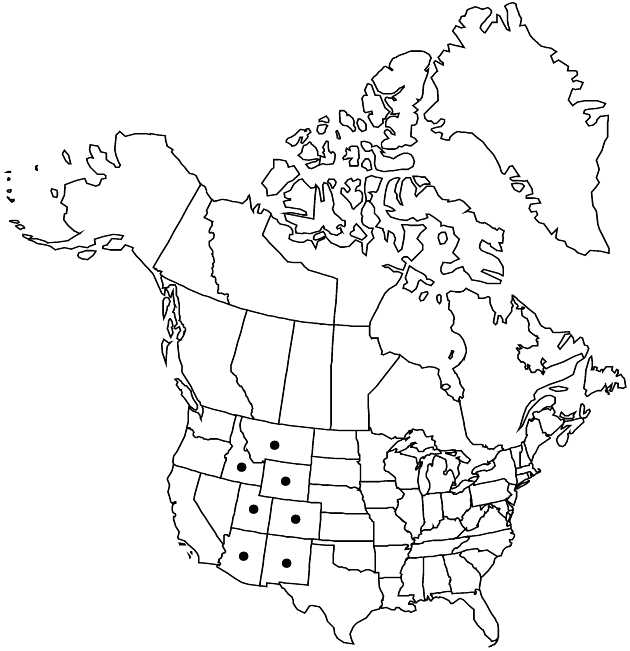Difference between revisions of "Herrickia glauca"
Sida 21: 897. 2004.
FNA>Volume Importer |
FNA>Volume Importer |
||
| Line 11: | Line 11: | ||
|name=Eucephalus glaucus | |name=Eucephalus glaucus | ||
|authority=Nuttall | |authority=Nuttall | ||
| + | |rank=species | ||
|publication_title=Trans. Amer. Philos. Soc., n. s. | |publication_title=Trans. Amer. Philos. Soc., n. s. | ||
|publication_place=7: 299. 1840 | |publication_place=7: 299. 1840 | ||
| Line 17: | Line 18: | ||
|name=Aster glaucus | |name=Aster glaucus | ||
|authority=(Nuttall) Torrey & A. Gray | |authority=(Nuttall) Torrey & A. Gray | ||
| + | |rank=species | ||
}} {{Treatment/ID/Synonym | }} {{Treatment/ID/Synonym | ||
|name=Aster glaucodes | |name=Aster glaucodes | ||
|authority=S. F. Blake | |authority=S. F. Blake | ||
| + | |rank=species | ||
}} {{Treatment/ID/Synonym | }} {{Treatment/ID/Synonym | ||
|name=Eurybia glauca | |name=Eurybia glauca | ||
|authority=(Nuttall) G. L. Nesom | |authority=(Nuttall) G. L. Nesom | ||
| + | |rank=species | ||
}} | }} | ||
|hierarchy=Asteraceae;Asteraceae tribe Astereae;Herrickia;Herrickia glauca | |hierarchy=Asteraceae;Asteraceae tribe Astereae;Herrickia;Herrickia glauca | ||
| Line 58: | Line 62: | ||
-->{{#Taxon: | -->{{#Taxon: | ||
name=Herrickia glauca | name=Herrickia glauca | ||
| − | |||
|authority=(Nuttall) Brouillet | |authority=(Nuttall) Brouillet | ||
|rank=species | |rank=species | ||
| Line 70: | Line 73: | ||
|publication year=2004 | |publication year=2004 | ||
|special status= | |special status= | ||
| − | |source xml=https://jpend@bitbucket.org/aafc-mbb/fna-data-curation.git/src/ | + | |source xml=https://jpend@bitbucket.org/aafc-mbb/fna-data-curation.git/src/eaa6e58056e40c9ef614d8f47aea294977a1a5e9/coarse_grained_fna_xml/V19-20-21/V20_842.xml |
|tribe=Asteraceae tribe Astereae | |tribe=Asteraceae tribe Astereae | ||
|genus=Herrickia | |genus=Herrickia | ||
Revision as of 19:31, 16 December 2019
Perennials, 20–70 cm, colonial and cespitose, ± glaucous, sometimes stipitate-glandular distally; rhizomes woody, elongate and creeping, or short, erect, branched. Stems 1–7+, erect, sometimes branched proximally, straight, glabrous proximally, sometimes thinly scabridulous distally. Leaves cauline; proximal reduced, withering by flowering, firm; sessile; blades oblong or elliptic-oblong to lanceolate (sometimes narrowly), 40–120 × 5–25 mm, bases ± clasping, sometimes cuneate, main veins ± marked, margins entire, indurate, sparsely to densely scabridulous, apices acute to obtuse, mucronate (margins recurved at apex), faces glabrous. Heads 2–116+ usually in corymbiform, sometimes in open, paniculiform arrays. Peduncles glabrous to sometimes thinly scabridulous or villosulous; bracts 0–2, foliaceous, margins villose-ciliate or glabrous. Involucres campanulate, 6–9 mm. Phyllaries (15–35) in 4–5 series, keeled or rounded, ovate or oblong (outer) to lanceolate (inner), unequal, membranous, bases indurate, green zones in distal 1/5–1/3 or less (outer), reduced to midnerve or none (inner), margins erose, narrowly scarious, hyaline, sometimes purplish distally (inner), entire to villoso-ciliolate, apices ± appressed, obtuse or acute (outer), often purple and acute or acuminate (inner), sometimes apiculate, faces glabrous. Ray florets (8–)10–15(–19); corollas pale lavender, 8–18 × 0.7–1.3 mm. Disc florets 12–32; corollas yellow turning reddish purple, barely or not ampliate, 6.8–7.5 mm, tubes narrowly cylindric, shorter than funnelform throats, lobes spreading, lanceolate, 0.7–1.3 mm. Cypselae tan to stramineous, fusiform, ± compressed, 3.8–4.8 mm, ribs 7–10 (stramineous), faces glabrous or sparsely strigillose; pappi of (ca. 37) yellowish to cinnamonish bristles 6.4–7.2 mm.
Distribution

w United States.
Discussion
Varieties 2 (2 in the flora).
Selected References
None.
Key
| 1 | Distal stems, peduncles, and phyllaries eglandular | Herrickia glauca var. glauca |
| 1 | Distal stems, peduncles, and phyllaries stipitate-glandular | Herrickia glauca var. pulchra |